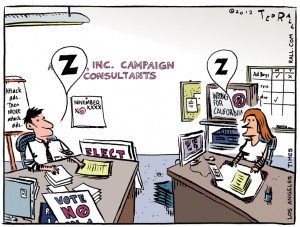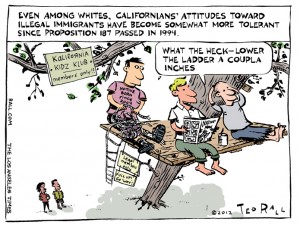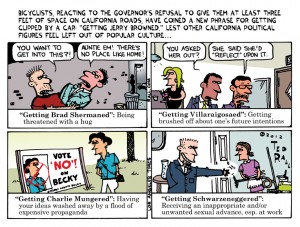I draw cartoons for The Los Angeles Times about issues related to California and the Southland (metro Los Angeles).
This week: After a long and grueling campaign marked by unprecedented spending on negative attack ads in the media, the people vote. It’s all calm…for now. The next round of elections is Spring 2013.




